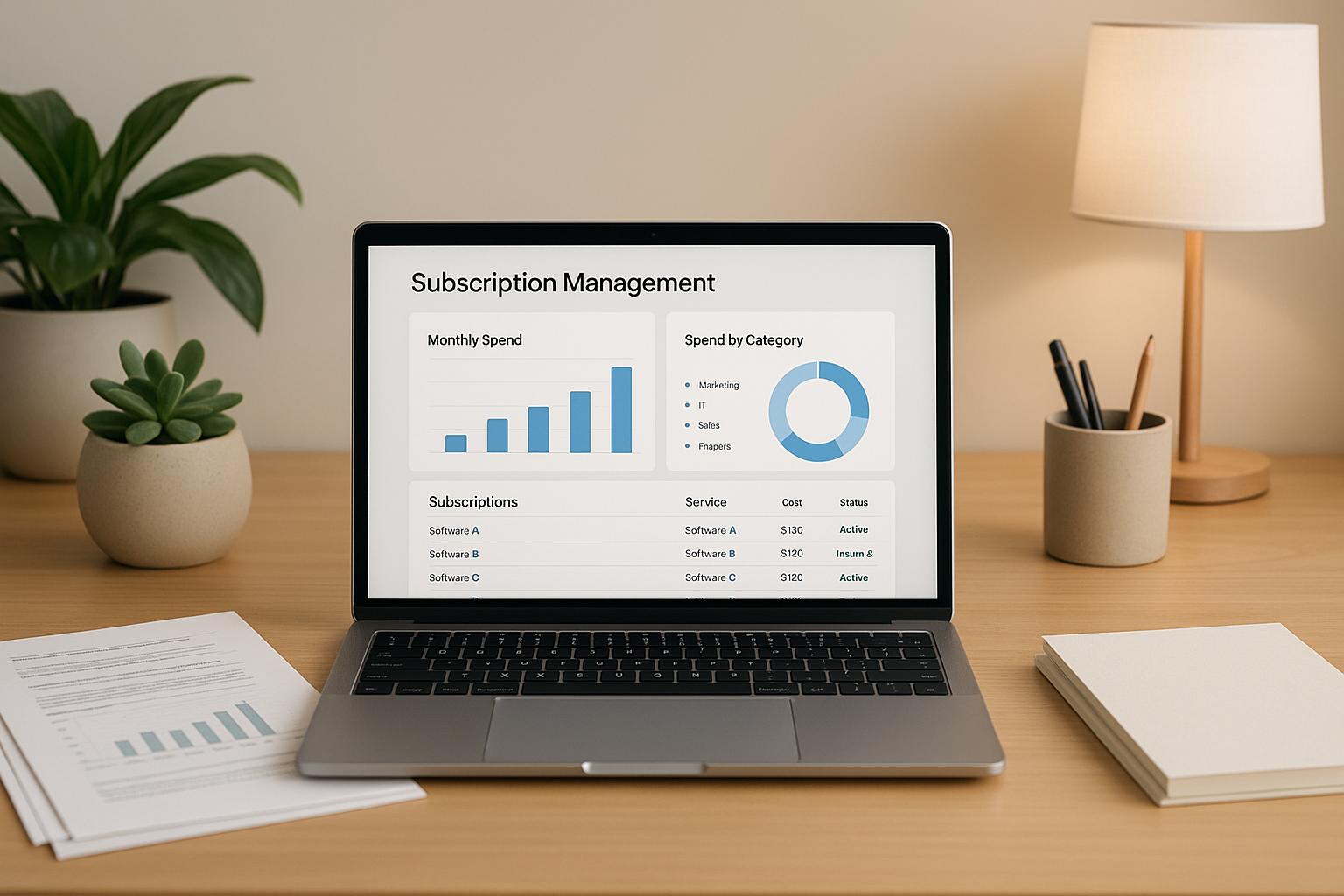Contingency Planning for Cash Flow Crises

Cash flow issues are the leading cause of business failures, with 82% of small businesses closing due to poor cash flow management. If you're a business owner, this is a risk you can't ignore. Whether it's late payments, seasonal dips, or unexpected expenses, cash flow disruptions can cripple operations. But there's good news: with a solid contingency plan, you can safeguard your business and bounce back faster from financial shocks.
Key Takeaways:
- Common cash flow problems: Late payments, seasonal fluctuations, overreliance on major clients, rapid growth, and surprise expenses.
- Impact of disruptions: Delayed payroll, strained supplier relationships, reduced growth opportunities, reliance on high-interest credit, and reputational damage.
- Warning signs: Using credit for everyday expenses, rising accounts receivable, delayed vendor payments, and mixing personal and business finances.
- Solutions: Build emergency cash reserves, negotiate payment terms, cut costs, secure flexible credit options, and improve cash flow forecasting.
Proactive planning is your best defense. By understanding the risks, monitoring key metrics, and preparing resources like cash reserves and credit lines, you can navigate challenges with confidence. Don't wait for a crisis - start planning while your business is stable.
Common Cash Flow Crises Explained
To build a solid financial foundation, it's crucial to understand the typical scenarios that can drain cash flow. Recognizing these patterns is the first step in creating strategies to safeguard your business. While every company faces its own set of challenges, certain issues tend to crop up across industries and business sizes.
Cash Flow Crisis Scenarios
Late customer payments are a major culprit. Nearly 48% of U.S. businesses experience delayed payments, creating a domino effect of operational headaches. When customers take longer to pay, companies are left scrambling to cover fixed costs like payroll, rent, and supplier bills before revenue comes in.
Seasonal fluctuations can also wreak havoc. Businesses that rely on peak seasons for the bulk of their revenue often struggle to manage fixed expenses during slower months. Without careful planning, these predictable ebbs and flows can quickly spiral into a crisis.
Overdependence on major clients is another risky scenario. For startups, relying on a single client for more than 30% of their revenue can leave them vulnerable. If that client delays payment, reduces orders, or ends the relationship, the financial impact can be devastating.
Rapid growth might sound like a good problem to have, but it can strain cash flow significantly. Scaling up often requires upfront investments in inventory, staffing, and operations - expenses that come due long before the revenue starts rolling in.
Unexpected expenses - like an equipment breakdown, a legal issue, or emergency repairs - can turn a stable cash flow into a crisis overnight. These unplanned costs often pull funds away from other essential areas, making the situation even worse.
Each of these scenarios doesn’t just disrupt day-to-day operations - they can set off a chain reaction of broader challenges, which we’ll explore next.
How Cash Flow Disruptions Affect Business
The consequences of cash flow issues extend far beyond balancing the books. For example, delayed payroll can erode employee trust. If workers don’t receive their paychecks on time, you risk losing key talent, which can be hard to replace.
Strained supplier relationships are another common outcome. When vendors aren’t paid promptly, they may tighten credit terms, demand upfront payments, or even stop doing business with you. This forces companies to pay for materials in advance, often while still waiting on payments from customers.
Cash flow problems can also limit a company’s ability to invest in growth. Hiring, training, and retaining staff becomes a challenge, and marketing budgets may get slashed just when they’re needed most. These cuts can further compound the financial strain.
Relying on high-interest credit to cover shortfalls is another pitfall. While it might seem like a quick fix, this approach can deepen cash flow gaps and divert resources away from long-term growth plans.
On top of that, legal and regulatory risks can escalate. Falling behind on taxes, payroll, or vendor agreements can lead to penalties, interest charges, or even lawsuits.
Finally, reputational damage is a real threat. Missed payments and unpaid invoices can tarnish your business reputation, making it harder to attract new clients or secure partnerships.
Identifying these impacts early is crucial, which brings us to the warning signs you should watch for.
Warning Signs of Cash Flow Problems
Catching cash flow issues early can prevent a full-blown crisis. On average, businesses operate with a 27-day cash buffer, making early intervention essential.
Using credit cards for everyday expenses is often a red flag. When companies rely on credit to cover basics like payroll, rent, or supplier bills, it’s a sign that operating funds are running low. In fact, 61% of entrepreneurs use personal credit cards for business purchases, which often points to deeper financial issues.
Rising accounts receivable balances are another warning sign. If your collection period stretches from 30 days to 45 or 60, it indicates growing delays in customer payments, which can put added pressure on your cash flow.
Delayed vendor payments are equally concerning. Suppliers might reduce credit terms or demand immediate payment, and 58% of businesses report losing key suppliers due to late payments. Even minor delays can cause major disruptions.
Mixing personal and business accounts is another red flag. Regularly transferring funds between the two often signals a lack of proper financial planning and separation.
Growing sales without available cash can also indicate trouble. If revenue is increasing but your cash reserves aren’t, it may mean your growth is outpacing your ability to turn revenue into liquid assets. On top of that, missing financial forecasts or skipping regular cash flow projections leaves businesses unprepared for sudden challenges. With labor costs accounting for 70% of spending, keeping a close eye on cash flow is essential for staying ahead of potential problems and building a stronger financial strategy.
Building Your Cash Flow Contingency Plan
Once you’ve identified the warning signs and understood the potential impacts of cash flow disruptions, it’s time to create a contingency plan. Think of it as your business’s safety net - a structured approach to handle disruptions before they spiral into full-blown crises.
This plan should outline specific actions, assign responsibilities, and establish clear triggers for when to activate emergency measures. The best time to develop it? When your business is running smoothly - not when you’re already in the middle of a cash crunch. The process involves three main steps: assessing risks, monitoring key metrics, and evaluating available resources.
Risk Assessment and Planning Scenarios
Every solid contingency plan begins with understanding the risks that could jeopardize your cash flow. Tie this step to your broader crisis management strategy and focus on pinpointing scenarios that could disrupt operations.
Start by analyzing your core operations and identifying potential threats. For example, if you’re in manufacturing, risks might include equipment failures, delays from suppliers, or quality issues. On the other hand, service-based businesses might face challenges like losing a major client, high staff turnover, or tech system outages.
Scenario analysis can be a game-changer here. By running "what-if" exercises, you can explore various possibilities and their potential cash flow impacts. This approach helps you prepare for multiple outcomes rather than relying on optimism alone.
A SWOT analysis can also provide valuable insights by identifying your internal strengths and weaknesses alongside external opportunities and threats. For instance, having a highly skilled team is a strength, but it could become a risk if key members leave during a downturn.
Document each risk scenario in detail, noting the likelihood of occurrence, potential financial impact, and escalation timeline. This allows you to prioritize your planning efforts on the most pressing threats.
Monitoring Financial Metrics
A contingency plan is only as good as the vigilance behind it. Regularly monitoring financial metrics is crucial for spotting early warning signs and taking timely action.
Key metrics to watch include Days Sales Outstanding (DSO), Days Payable Outstanding (DPO), Cash Conversion Cycle (CCC), Operating Cash Flow (OCF), and Free Cash Flow (FCF). For example, if your DSO starts climbing from 30 to 45 days, it might be time to revisit your collection processes. Similarly, a rising DPO could signal cash flow tightening as you delay payments to suppliers.
A 13-week cash flow forecast, updated weekly, provides enough visibility to identify trends and make proactive decisions. Tracking forecast variances also helps fine-tune your cash flow predictions over time.
Other indicators like Working Capital and the Current Ratio offer insights into your liquidity and ability to meet short-term obligations. These metrics can help you determine when to activate your contingency measures.
If your business uses finance automation tools, take advantage of their ability to integrate data from multiple sources and calculate these metrics automatically. This can make monitoring far more efficient, especially for busy business owners.
Assessing Available Resources
Understanding your resources is critical to navigating cash flow disruptions. Start by reviewing your cash reserves and burn rate to determine how much runway you have. Many businesses are surprised to discover their cushion is smaller than expected.
Next, evaluate your borrowing capacity. This includes credit lines, equipment financing options, and relationships with lenders. It’s much easier to secure funding when your financial position is strong, so don’t wait until you’re in a bind to explore these options.
Take stock of your assets. Identify which ones are essential for operations and which could be sold or refinanced if needed. For instance, underutilized equipment, surplus inventory, or non-core business units might offer quick liquidity. Real estate, vehicles, or specialized equipment can also provide value in a pinch.
Review your business interruption insurance and other policies that might offer financial support during disruptions. These resources are often overlooked until they’re needed, which can delay recovery.
You might also explore supply chain financing options. Some suppliers offer early payment discounts to improve cash flow, while certain customers may agree to pay invoices early in exchange for better terms.
Centralize all this information - cash reserves, credit lines, assets, insurance policies, and financing options - in one easily accessible location. Include contact details, account numbers, and key terms so you can act quickly during a crisis.
Finally, create a clear activation policy. Define when contingency measures should be triggered, who has the authority to make those decisions, and the exact steps to follow. This ensures quick, decisive action when it matters most, reducing guesswork and emotional decision-making during high-pressure situations.
Methods to Reduce Cash Flow Disruptions
A contingency plan is a great foundation, but it’s not enough on its own. To truly safeguard your business finances, you need strategies that actively minimize the risk and impact of cash flow disruptions. Here are some practical methods to build financial resilience.
Creating Emergency Cash Reserves
Set aside three to six months of operating expenses as an emergency cash reserve. You can achieve this by allocating excess profits, rebates, or available credit into a dedicated account. Automating transfers to a high-yield savings or money market account can make this process seamless.
Access to this reserve should be tightly controlled - limit it to business owners or key financial officers - and establish clear guidelines on what qualifies as an emergency. If you dip into the reserve, make replenishment a priority, using updated cash flow projections to guide the process.
Improving Payment Terms
Adjusting payment terms with both customers and suppliers can significantly improve your cash flow. The goal? Extend the time you have to pay bills while shortening the time it takes to collect payments.
Work with suppliers to negotiate more flexible payment cycles. For customers, clearly define payment terms and consider offering early payment discounts. If a customer is facing temporary financial challenges, structured payment plans can help ensure you still get paid while maintaining the relationship.
Cutting Operating Costs
Take a close look at your expenses to identify areas where you can cut costs. Cancel non-essential subscriptions, eliminate redundant services, and adopt just-in-time inventory practices to avoid tying up cash in excess stock. Selling unused assets can also free up additional funds.
Using Flexible Credit Options
Establish credit facilities before you actually need them. Options like lines of credit, equipment financing, or invoice factoring can help bridge gaps or fund growth opportunities. Build relationships with community banks, credit unions, and online lenders to ensure quick access to funds when necessary.
Improving Cash Flow Forecasting
Accurate forecasting transforms cash flow management from a reactive scramble to a proactive strategy. Modern financial tools can help improve both accuracy and efficiency.
Take Peak Toolworks as an example - they automated their forecasting using treasury management software. According to their CFO, Ben Stilwell:
"Our process has improved dramatically, and we have a cash forecast complete by the end of the first business day of the week, versus the 4th day, and we are 100% sure of the accuracy."
A 13-week rolling forecast, updated weekly, can be a game changer. Automate data collection to save time and reduce errors, and use scenario planning to evaluate best, worst, and likely outcomes. Involving multiple departments in the process can uncover insights that might be missed in a strictly financial analysis.
sbb-itb-e766981
Working with Professional Advisory Services
When internal strategies to handle cash flow disruptions need an extra edge, professional advisory services can provide the expertise and tools to strengthen both planning and execution. If your team lacks the resources or knowledge to create a detailed contingency plan, fractional CFOs can fill that gap effectively. Temporary management roles have seen a sharp increase - up 18% from 2021 to 2022 and 57% since 2020. While hiring a full-time CFO can cost over $400,000 annually, fractional CFO services offer a cost-effective alternative, delivering high-level strategic guidance at a much lower expense. Interestingly, about two-thirds of companies using fractional CFOs have annual revenues between $2 million and $30 million, highlighting how these services cater to growth-focused businesses.
A fractional CFO can make an immediate impact by identifying financial weak spots, managing cash flows, and preparing for potential disruptions. Take, for example, a tech startup specializing in AI solutions. During a period of rapid growth, the company struggled with complex financial challenges and lacked the internal expertise to manage scaling operations. By bringing in a fractional CFO, they gained strategic oversight and implemented more effective cash flow management systems. This move not only helped them secure $10 million in Series B funding but also significantly improved their cash flow forecasting. Such strategic guidance often includes integrating advanced financial tools to bring even greater accuracy to cash flow management.
Advanced Financial Tools and Systems
Professional advisory services often use cutting-edge technology that may not be accessible to in-house teams. AI-driven forecasting models, for instance, can cut error rates by as much as 50% compared to traditional methods by analyzing cash flow patterns with greater precision. This technology enhances forecasting by enabling scenario analysis and stress testing, which can simulate various financial situations and their impacts in just minutes.
Rolling forecasts are another powerful tool, continuously updating with new data to align cash flow estimates with overall business plans. These forecasts allow companies to assess their financial standing under best-case, base-case, and worst-case scenarios, offering a comprehensive view of potential outcomes.
"AI has introduced a new era of precision, efficiency and strategic insight to cash management and liquidity management."
– Alberto Hernandez-Martinez, Executive Director, Industry Solutions at J.P. Morgan
Phoenix Strategy Group's Approach

Phoenix Strategy Group stands out by combining fractional CFO expertise with proprietary technology to deliver tailored contingency planning solutions. Their method integrates financial modeling, real-time data updates, and strategic decision-making into a single, actionable framework. This approach ties together revenue forecasting, expense management, risk assessment, and strategic forecasting, creating a cohesive plan for businesses to follow.
One of their standout tools, the Monday Morning Metrics system, provides weekly updates on critical financial indicators. This system helps businesses identify potential cash flow problems before they escalate into larger issues. Additionally, Phoenix Strategy Group’s advanced data engineering ensures real-time synchronization across financial systems, reducing errors and improving the accuracy of scenario modeling. Their services also include liquidity stress testing, which evaluates how financial pressures could impact a company’s ability to meet obligations and maintain operations.
Comparing Contingency Planning Options
Choosing the right contingency planning strategies means understanding how each option performs in different situations. Each method offers distinct benefits and challenges that can influence your ability to handle cash flow disruptions effectively.
Contingency Options Comparison
To make informed decisions, it's essential to weigh the trade-offs of various methods. Factors like how quickly funds can be accessed, reliability, operational effects, and costs all play a role in determining the best approach.
For instance, businesses with seasonal revenue fluctuations might lean on emergency reserves to cover predictable slow periods. On the other hand, companies experiencing rapid growth may prefer credit lines to sustain expansion without draining their cash reserves.
| Method | Access Speed | Reliability | Operational Impact | Cost |
|---|---|---|---|---|
| Emergency Cash Reserves | Immediate | High (if adequately funded) | None | Opportunity cost of idle cash |
| Flexible Credit Options | 1–7 days (after approval) | Medium (depends on creditworthiness) | Minimal | Interest rates and fees |
| Cost Reduction Strategies | 1–30 days | High | Moderate to high | Potential efficiency loss |
| Professional Advisory Services | 1–14 days | High | Low | Service fees and retainers |
A well-rounded contingency plan often combines multiple strategies. For example, financial experts commonly recommend maintaining cash reserves to cover three to six months of operating costs. These reserves provide an immediate safety net for short-term needs.
Flexible credit options can extend available funds beyond savings, but they need careful oversight to avoid high interest costs. Meanwhile, professional advisory services bring in specialized knowledge that can be critical for managing complex financial challenges.
Businesses that build resilience typically layer these methods instead of relying on just one. For instance, a manufacturing company might keep three months of cash reserves on hand, secure a credit line for larger disruptions, and work with financial advisors to improve cash flow forecasting. This diversified approach creates multiple layers of protection while keeping costs and operational flexibility in check.
When deciding on the right mix, consider the specific risks tied to your industry. Retail businesses with seasonal sales cycles often benefit from robust cash reserves, while tech companies navigating fast-changing markets may prioritize flexible credit and expert advice to adapt quickly.
Conclusion: Building Resilience Against Cash Flow Crises
Cash flow crises can hit when least expected, but the businesses that survive - and even thrive - are those that prepare ahead of time. As discussed earlier, managing these challenges effectively starts with planning. It’s the difference between staying afloat during a financial storm or scrambling to stay alive.
Creating financial resilience isn’t about a single tactic - it’s about layering multiple strategies. Savvy businesses keep cash reserves that cover three to six months of expenses, secure credit lines before they’re needed, and design detailed contingency plans with specific actions for various scenarios. These safety nets aren’t just about survival; they give companies the confidence to make bold decisions, even in uncertain times.
"Contingency planning isn't just about preparing for disaster - it's about making smarter financial decisions every day. The unexpected will happen. Will you be ready?"
– National Training
This quote underscores how expert guidance can transform contingency planning into a powerful tool. Professional advisors, like fractional CFOs, bring specialized knowledge in areas like cash flow forecasting and strategic financial planning. With 90% of U.S. finance leaders outsourcing certain accounting functions, it’s clear that many businesses are seeing the value of this kind of expertise - without the cost of a full-time executive.
Another key to resilience is keeping contingency plans current. The smartest businesses revisit their plans every six to twelve months, updating financial forecasts and adjusting strategies as markets shift. This ensures their plans remain actionable and relevant, no matter how dynamic the environment.
"In a financial crisis, the focus on treasury is quick and intense."
– Experienced Treasurer
FAQs
What steps can businesses take to avoid cash flow problems before they happen?
Businesses looking to dodge cash flow issues should begin by establishing a cash reserve. This reserve acts as a safety net for unexpected expenses, giving your company some breathing room when surprises arise. Alongside this, crafting both short-term and long-term budgets is crucial for keeping a close eye on income and expenses.
To keep cash flowing steadily, focus on improving how you manage accounts receivable. Sending invoices promptly and offering incentives like early payment discounts can encourage quicker payments from clients. On the flip side, take a closer look at vendor agreements - negotiating better payment terms or automating financial processes can help reduce risks and improve liquidity.
Regular financial check-ins and forward-thinking strategies are essential for staying ahead of potential cash flow hurdles and keeping your business on solid ground.
How can businesses effectively manage emergency cash reserves and credit options during a cash flow crisis?
To handle a cash flow crisis effectively, businesses should prioritize keeping emergency cash reserves that can cover 3–6 months of operating costs. This safety net provides quick access to funds for essential expenses without having to depend entirely on credit.
Additionally, having flexible credit options - like business credit cards or short-term loans - can be a lifesaver for unexpected costs or temporary cash flow gaps. Using credit wisely allows businesses to maintain liquidity without racking up unnecessary interest charges.
It's also smart to regularly review cash flow forecasts and run scenario planning exercises. This helps businesses decide when to tap into reserves or credit, ensuring they stay financially stable and better prepared to weather disruptions.
How can fractional CFOs and other professional advisors improve a company’s cash flow management?
Fractional CFOs and professional advisors are key allies in managing and improving cash flow. They bring expertise to the table, helping businesses track, analyze, and fine-tune their cash flow processes. By crafting precise forecasts, they ensure companies have the liquidity needed to cover expenses, support growth, and handle unforeseen hurdles.
These experts also develop strategies to optimize payment schedules, minimize financial risks, and uncover ways to boost cash flow efficiency. Their guidance helps businesses stay steady, weather financial challenges, and grow with confidence.




